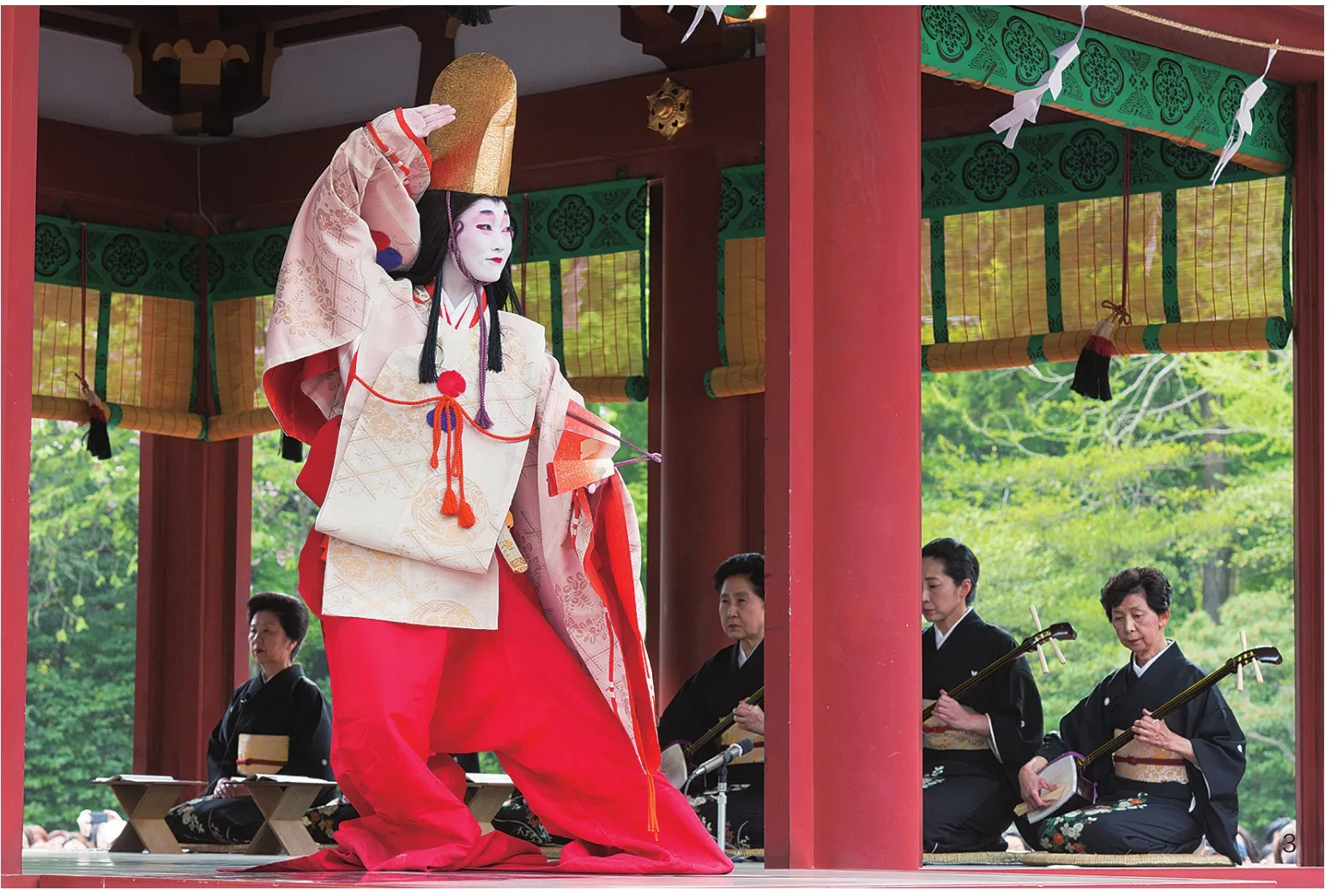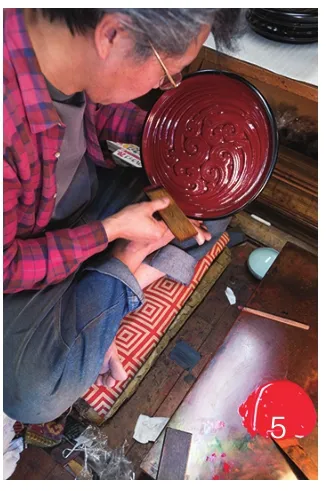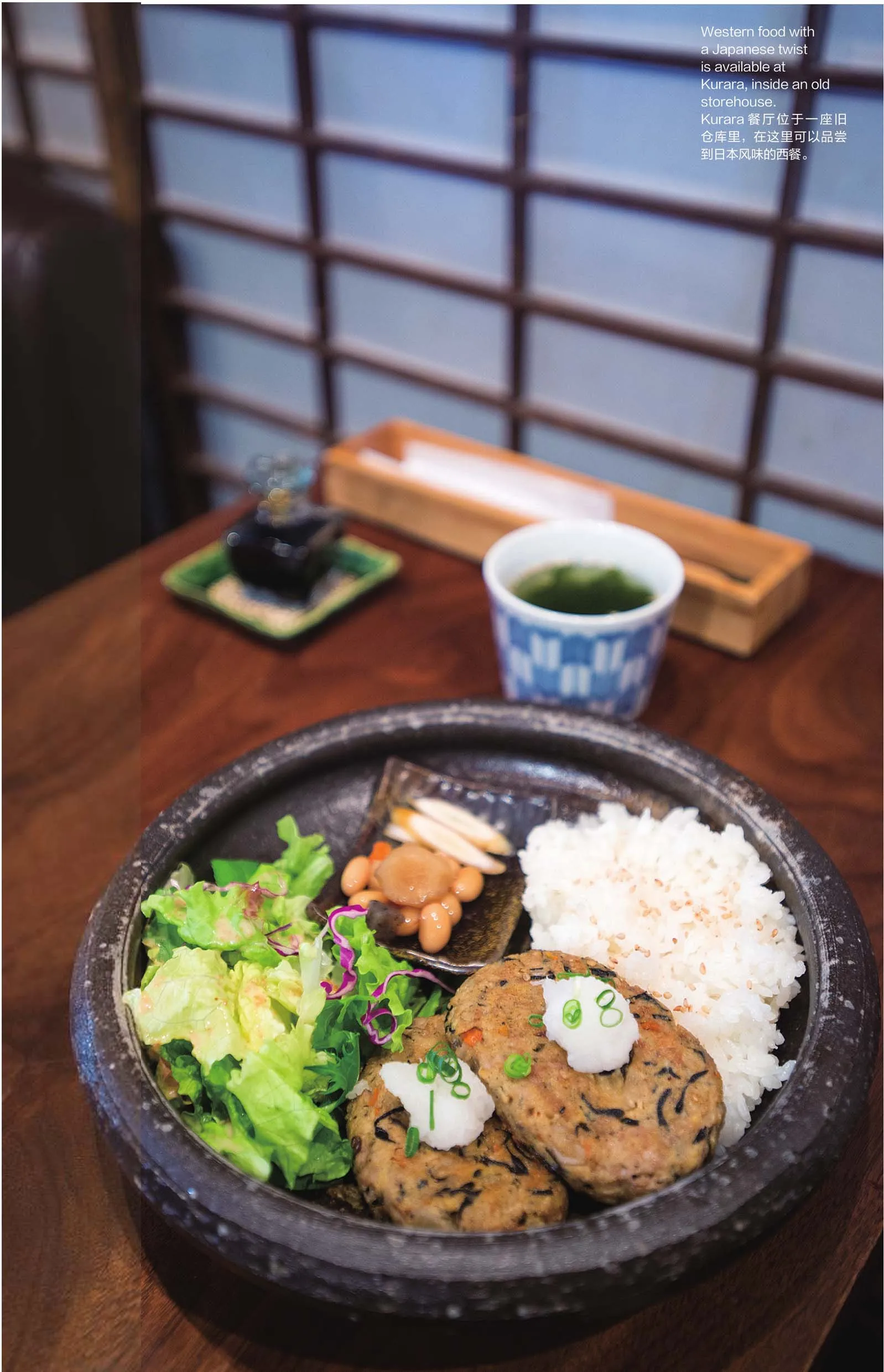KAMAKURA COMES ALlVE
2016-04-14TextPhotosbyPeterWeldTranslationbyEmmaXu
Text & Photos by Peter Weld Translation by Emma Xu
KAMAKURA COMES ALlVE
Text & Photos by Peter Weld Translation by Emma Xu
Everybody knows that Tokyo is the capital of Japan; many people also know that the capital used to be Kyoto. Centuries ago, however, the de facto capital—the real seat of power—was Kamakura. Today's Kamakura is a sleepy town from where most residents commute north to Yokohama and Tokyo. But even if its glory days are long behind it, Kamakura still makes a glorious day-trip from Tokyo.

The temple known as Jochiji, with its peaceful garden out back, sits at the northern end of the Daibutsu Hiking Course.净智寺位于“大佛徒步路线”的北端,寺后有一片静谧的园林。
镰仓:古都春来
人人都知东京是日本现在的首都,京都是旧都。然而,几百年前,真正的权力中心是镰仓。如今,镰仓变成了一座清冷的小镇,居民大都北上横滨和东京谋生。即使光辉岁月已经远去,镰仓依旧风光无限。


1. Ceramic foxes crowd Sasuke Inari Jinja, a little-known Shinto shrine tucked away in the hills.
佐助稲荷神社的陶瓷摆件。
2. Along with Daibutsu, Tsurugaoka Hachimangu draws some of the biggest crowds in Kamakura.
鹤冈八幡宫也是镰仓地区吸引游客最多的景点。
A BlG BUDDHA AND A SHlNTO SHRlNE
Kamakura's heyday stretched from the late twelfth century through to the early fourteenth century. The secular buildings of that time have long since disappeared; what remains is a myriad of Buddhist temples and Shinto shrines, and a visitor could spend several fascinating days exploring them, but a single day in Kamakura would have to include at least Daibutsu and Tsurugaoka Hachimangu.
About one-and-a-half kilometres west of Kamakura Station, Daibutsu — literally, “the Big Buddha”—is arguably the town's mascot, and images of it pop up everywhere, even on the cookies in the souvenir shops. It was cast some seven centuries ago in many separate parts, which were then assembled to form a single bronze statue, over 13 metres tall. A wooden building protected it from the elements until 1498, when a tsunami carried the building away but miraculously left Daibutsu undisturbed. Today it still sits out in the open, all the more photogenic under a deep blue sky.
Back at Kamakura Station, head northeast to reach Tsurugaoka Hachimangu, one of the most important Shinto shrines in this part of the country. Shinto predates Buddhism's arrival in Japan, and it's a major part of the cultural landscape. The Japanese go to shrines for everything from traditional weddings to praying for success on entrance exams to getting blessings for their newborn babies. Interestingly, Tsurugaoka Hachimangu was both a Buddhist temple and a Shinto shrine—larger and more impressive than it is now—until an 1868 government decree that Shinto and Buddhism institutions would have to be separate.
Today's Hachimangu is all Shinto and no Buddhism and is much smaller and simpler, but it's still worth a careful inspection. Watch the locals as they write their wishes on a wooden tablet called an ema and hang it alongside hundreds of others. Watch them pull an omikuji, a slip of paper telling them their fortune, and then fold it and tie it to a tree branch. Watch how they pray: two bows, then two hand claps, then one more bow. If you're lucky, you might see a Shinto priest blessing a newborn or a newlypurchased car; if you're really lucky, you might witness a marriage procession.
It's often said that getting there is half the fun, and that's defi nitely true in Kamakura. On the east side of the station, two streets run straight all the way up to Tsurugaoka Hachimangu. The wider of the two streets is called Wakamiya-oji: one lane in each direction for cars, separated by Dankazura, a raised pedestrian lane flanked by hundreds of cherry blossom trees. Dankazura was built more than eight centuries ago on the orders of the fi rst shogun, and though it's now bustling with tourists, back then it served as a sacred approach to the shrine, off-limits to all but the highest priests and offi cials.
Running roughly parallel to Wakamiya-oji is a much narrower pedestrian lane called Komachidori. It can't boast the history that Dankazura has, but it's probably even more popular with visitors, and like Wakamiya-oji, it's lined with an amazing variety of shops, restaurants, and cafés. You could walk right up either of these streets to Tsurugaoka Hachimangu in a matter of minutes, but no matter which way you choose to go, the journey is more likely to take you a couple of hours.



BOWS AND ARROWS, SAMURAl STYLE
Kamakura offers things to do at all times of the year. In early summer, for example, you can admire the hydrangeas which bloom by the thousands, and in autumn, you can watch the leaves change color. But at this time of the year, cherry blossoms are the big attraction.
The cherry blossoms are in full bloom in the last week of March and the fi rst week of April. Flanked along its 500-metre length by nearly 250 cherry blossom trees, Dankazura is the premier spot for strolling under a canopy of pale pink flowers, both by day and by night, when they're illuminated.
As the cherry blossoms pass their prime and start to come down on everybody's head like a pink blizzard, Kamakura gears up for a series of special events. One of the most exciting is yabusame: horsemen dressed in deer hide and other Kamakura Period fi nery, riding their steeds full pelt past three targets and fi ring arrows at them. As diffi cult as it sounds, most archers manage to hit at least one of the targets, and some strike all three.
Yabusame was developed in the thirteenth century by the first shogun, Minamoto no Yoritomo, as a way for his samurais to stay sharp between battles, but after guns arrived on Japan's shores in the 1500s, it became less of a practical skill and more of a religious ritual—a way to entertain the gods. Practical or not, it's defi nitely a sight worth seeing, and it draws good-sized crowds, so get there early to stake out a spot with a clear view of the action. Yabusame is held three times a year: on the third Sunday in April, on September 16, and on one day in early October.

There's also Shizuka no Mai, or the Dance of Shizuka. It's performed on the second Sunday in April and dates back to the twelfth century. In an open-sided pavilion just below Tsurugaoka Hachimangu, a single, elaborately-costumed dancer, accompanied by flutes and shamisen, twirls slowly around the stage. The story goes that Shizuka Gozen was a professional dancer—and the mistress of the shogun's chiefrival, his younger brother. When the shogun's soldiers captured her and brought her to Kamakura to perform for him, she danced to a song whose lyrics expressed her longing for his brother. The shogun was presumably not pleased. short—about one-and-a-half hours end-to-end—and no special gear is required, so for anyone tired of Tokyo's crowded trains and buses, the trail offers a great way to get some exercise and culture at the same time.
Back in the shogun's days, the low hills that surround Kamakura on three sides (with Sagami Bay on the fourth) were crucial to the town's defenses, but today they're also home to several pleasant hiking trails. Of these the most popular is the Daibutsu Hiking Course, running north from Daibutsu to a serene Buddhist temple known as Jochiji. Along the way, hikers can drop in at the unusual Zeniarai Benzaiten: money washed at this shrine is believed to double in value. The trail is
If you prefer shopping to hiking, Kamakura's most famous local craftis Kamakura-bori: heavy, carved, lacquered wooden items. Once used solely to furnish the area's temples and shrines, these days Kamakura-bori is used to create bowls, plates, and decorative pieces. Visit Hakkodo, just south of Tsurugaoka Hachimangu, to see a fine selection and maybe visit the artisans' workshop in back of the showroom. Another popular purchase is washi, or Japanese hand-made paper. On the west side of Komachi-dori, the store called Shato offers an outstanding variety of colourful papers.
1. At Zeniarai Benten, people wash their money in the belief that it will double in value.
人们到钱洗弁天神社“洗钱”,据说洗过的钱会钱滚钱。
2. Nearly 250 cherry blossom trees line Dankazura, the approach to Tsurugaoka Hachimangu.
通往鹤冈八幡宫的“段葛”两旁林立着近250棵樱花树。
3. Dating back some 800 years, Shizuka no Mai is performed every April.
“静之舞”每年4月都会上演,带您穿越到800多年前。
4. Central Kamakura is mostly flat, so rickshaws provide a novel way to get around.
镰仓中部地势较平坦,乘坐人力车会给您带来新奇的出行体验。
5. In the artisans’workshop behind Hakkodo, craftsmen create beautiful Kamakura-bori pieces.
博古堂后面的工匠作坊中,匠人们在制作镰仓雕。
在《文件控制程序》中规定,构成本实验室管理体系的所有文件包括内部文件和外部文件,将所内行政公文归属于内部文件。明确指出:所内行政公文主要指限期使用或一次性执行的临时性所内发文,界定了所内行政公文的发文情形,将长期执行、已将规定固化的所内公文转化成内部管理体系文件。将行政要求作为管理手册的一个独立章节,包括行政管理、财务管理和科研管理,从而解决了文件和公文两套体系并存的问题,有利于文件的执行。
6. Little hand-dyed towels called tenugui are also popular souvenir purchases.手工染制的小毛巾也是颇受欢迎的手信。




Kids munch on pickled cucumber on a stick with a miso paste topping.孩子们恣意咀嚼着蘸有味噌酱的酸黄瓜。
KAMAKURA'S QUlRKY CUlSlNE
With so much to see and do, it's easy to work up an appetite. Kamakura is known for fish called shirasu (sometimes translated into English as “whitebait”), which are caught off the area's coast in Sagami Bay. Each one is tiny—smaller than your thumbnail—but put a pile of shirasu on top of a bowl of rice and you have shirasudon; together with a bowlof miso soup, this makes a simple, filling lunch. It's available all over town, but for the hippest setting, try Bowls, a café located on the east side of Wakamiya-oji, about half-way between Tsurugaoka Hachimangu and Kamakura Station. A little farther north, on the same side of the street, Kurara has a more traditional feel, with its restaurant built inside an old kura, or storehouse.
Komachi-dori also has plenty of places to eat. In addition to shirasudon, if it's mealtime, you can take your pick of sushi or tempura—pricey but delicious—or more affordable soba (buckwheat noodles) or tonkatsu (breaded pork cutlets). If it's snack time, try some green tea ice cream or even purple potato ice cream. There are shops selling all sorts of pickled vegetables, others selling manju—steamed buns with sweet bean paste inside—and others selling rice crackers, known as senbei in Japanese. Most shops will be happy to give you a little taste of their wares.
When you eventually reach the north end of Komachidori, you'll pass under the giant red torii, the gate which marks the entrance to a Shinto shrine. But you're not at the shrine yet, and on either side of the approach are stalls offering more exotic treats for your tastebuds. Some of them are things you might fi nd at a carnival in other countries—cotton candy and caramelized grapes, for example—but where else have you had sugary glazed strawberries on top of Ritz crackers or pickled cucumbers on a stick, with an optional misoand-mayonnaise topping?
If you visit Daibutsu, before leaving, stop for a look at the souvenir stand near the ticket window. Every tourist destination offers souvenirs for visitors to take home, but Japan is quite possibly the souvenir capital of the world. There's a tradition here of omiyage: small gifts taken home and distributed to friends and coworkers.
Whatever the reason, you'll see pencils with Daibutsu erasers, Daibutsu cell phone straps, Daibutsu hand towels, and much more. But the most popular omiyage are the edible ones, which is why you'll also find all manner of senbei, cookies, and manju shaped like Daibutsu or with his likeness on them. They're typically packaged a dozen or so to a box, all individually wrapped so that instead of presenting an entire box, you can open the box and dole out just one to each of your many acquaintances.
Keep in mind that although times are changing, many Japanese still frown on eating while walking, so it's best to sit while you eat. Remember too that those big birds circling overhead—tobi in Japanese, “black kites” in English—are famous for swooping on unsuspecting tourists and snatching whatever they might be eating. But Japan is quite possibly the most well-mannered country on Earth, and if you listen carefully, you just might hear the black kites saying “Thank you” as they fly away with your food.



镰仓恰好毗邻相模湾,尽情享用寿司吧。
2. Don't forget to look up at the ornate roofs over your head; these particular ones are at Hasedera.
别忘了抬头看看装饰精美的屋顶;这些独特的屋顶位于长谷寺内。
巍巍大佛,庄严神社
镰仓全盛时期的建筑消失已久,只剩下无数佛寺和神社。游客可花数天时间细细参观各间寺庙、神社。若选一日游,则至少去看看镰仓大佛和鹤冈八幡宫。
镰仓大佛本为木质结构,遭台风摧毁后,重铸为铜像。1498年,海啸冲毁遮盖大佛的大殿,而大佛无恙,从此,大佛就一直露天供奉。在湛蓝天空的衬托下,佛像显得格外雄伟壮观。
鹤冈八幡宫是当地最负盛名的神社。神道教对日本文化影响很深,日本人几乎事事都要去神社,小到祈求通过考试,大到庆生、办婚礼。镰仓人会在这里写下许愿牌、抽取签诗、虔诚地履行祈祷仪式。
镰仓车站的东边有两条路直通鹤冈八幡宫。宽的叫若宫大路,两旁是单行道。中间是参拜道路“段葛”,道边种满了樱花树,花开时景观极美。窄的是小町街,商店、餐馆林立,颇受游客青睐。
弓与箭,武士风
樱花盛放的时节是3月末至4月初。段葛是赏樱花的首选之地,无论白天夜晚,粉白色的花团都分外明丽。
樱花凋谢时,镰仓要举办“镰仓祭”系列活动。最为刺激的是流镝马:弓箭手身着狩猎装,骑马穿过三个标靶,连续放箭射靶。流镝马的难度很大,多数弓箭手只能射中一个靶。
“静之舞”表演也不容错过。在鹤冈八幡宫的亭台上,着装精致的舞者随着长笛与三味线的伴奏旋转起舞,讲述舞蹈名家静御前为了爱情反抗强权的故事。
独特美食,唇齿留香
小町街食肆众多。除了最出名的银鱼盖饭,价高味美的寿司、天妇罗值得一试,价格可爱的荞麦面、炸猪排也须尝尝。小摊上的泡菜、豆沙包、煎饼纷纷惹人馋,大多都可试吃。有些美食是只此一家,像糖浆草莓薄饼,在别处可尝不到。
享用美食时要当心头上盘旋的黑鸢,它们素来爱抢游客的食物。可日本是礼仪之邦,仔细听,黑鸢抢走食物后说不定道谢了。

Dressed in Kamakura Period clothes, archers reclaim their arrows as they ride back to the start of the yabusame course.身着镰仓时期服装的弓箭手们边回收箭支,边骑马返回流镝马起跑处。
